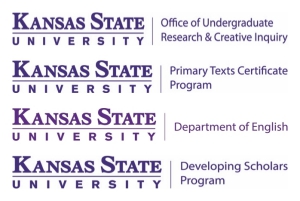Student Major/Year in School
Microbiology, third year
Faculty Mentor Information
Zhilong Yang, Division of Biology, College of Arts and Sciences
Abstract
Homologous recombination is a mechanism conducted to exchange nucleotides between two similar sequences, which allows researchers to knock out and add genetic sequences of their interest in vaccinia virus (VACV). In this study, a Western Reserve VACV strain with inserted genes encoding Red Florescence Protein (RFP) and Green Florescence Protein (GFP), will be targeted and replaced with the Thymidine Kinase gene, J2R as well as C11 gene, respectively. This will set the foundation for continual removal of genes as well as additions to make a virus that will more effectively target cancer cells without affecting healthy cells. To conduct this experiment, the J2R gene was constructed via overlapping PCR and shared homology with the Western Reserve strain allowing for the homologous recombination to occur. HeLa cells are then infected and transfected with the VACV and the J2R overlapping PCR fragment, respectively. The transfection of the overlapping J2R PCR fragment into the infected HeLa cells will allow the virus to recombine. The infected cells are then collected and used to infect BS-C-1 cells, which allowed formation of plaques. The green (GFP) plaques without RFP are to be collected and undergo several rounds of purification. Upon purification, the DNA will be extracted using an SQ Blood Kit and enhanced via PCR. To confirm the virus recombined appropriately, the DNA will be sent out for sequencing and the procedure will be repeated for the replacement of GFP with C11 overlapping PCR fragment. Upon successful recombinant virus construction, the virus will undergo additional knockouts as well as additions that will allow the virus to target cancerous cells more effectively.
Creative Commons License

This work is licensed under a Creative Commons Attribution-Noncommercial 4.0 License
Recommended Citation
Campos Guerrero, Marlene L. (2019). "Construction of Recombinant Vaccinia Virus for Oncolyitc Therapy," Kansas State University Undergraduate Research Conference. https://newprairiepress.org/ksuugradresearch/2019/posters/72
Construction of Recombinant Vaccinia Virus for Oncolyitc Therapy
Homologous recombination is a mechanism conducted to exchange nucleotides between two similar sequences, which allows researchers to knock out and add genetic sequences of their interest in vaccinia virus (VACV). In this study, a Western Reserve VACV strain with inserted genes encoding Red Florescence Protein (RFP) and Green Florescence Protein (GFP), will be targeted and replaced with the Thymidine Kinase gene, J2R as well as C11 gene, respectively. This will set the foundation for continual removal of genes as well as additions to make a virus that will more effectively target cancer cells without affecting healthy cells. To conduct this experiment, the J2R gene was constructed via overlapping PCR and shared homology with the Western Reserve strain allowing for the homologous recombination to occur. HeLa cells are then infected and transfected with the VACV and the J2R overlapping PCR fragment, respectively. The transfection of the overlapping J2R PCR fragment into the infected HeLa cells will allow the virus to recombine. The infected cells are then collected and used to infect BS-C-1 cells, which allowed formation of plaques. The green (GFP) plaques without RFP are to be collected and undergo several rounds of purification. Upon purification, the DNA will be extracted using an SQ Blood Kit and enhanced via PCR. To confirm the virus recombined appropriately, the DNA will be sent out for sequencing and the procedure will be repeated for the replacement of GFP with C11 overlapping PCR fragment. Upon successful recombinant virus construction, the virus will undergo additional knockouts as well as additions that will allow the virus to target cancerous cells more effectively.


